The Toshiba OCZ RD400 (256GB, 512GB, 1TB) M.2 PCIe SSD Review
by Billy Tallis on May 25, 2016 8:02 AM ESTAnandTech Storage Bench - The Destroyer
The Destroyer is an extremely long test replicating the access patterns of very IO-intensive desktop usage. A detailed breakdown can be found in this article. Like real-world usage and unlike our Iometer tests, the drives do get the occasional break that allows for some background garbage collection and flushing caches, but those idle times are limited to 25ms so that it doesn't take all week to run the test.
We quantify performance on this test by reporting the drive's average data throughput, a few data points about its latency, and the total energy used by the drive over the course of the test.
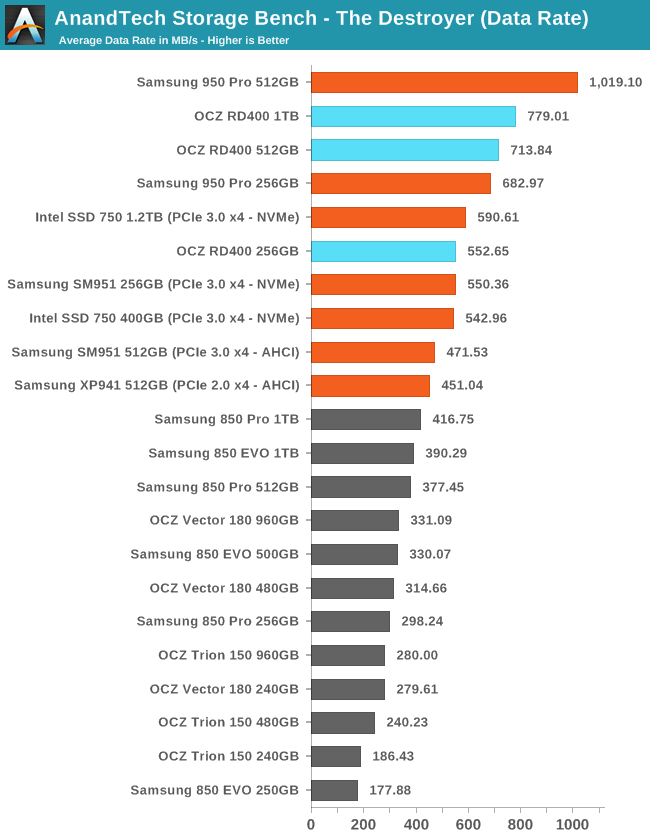
The OCZ RD400 can't keep pace with the Samsung 950 Pro on The Destroyer, but otherwise it beats or ties the other PCIe drives and is substantially faster than any SATA drive.
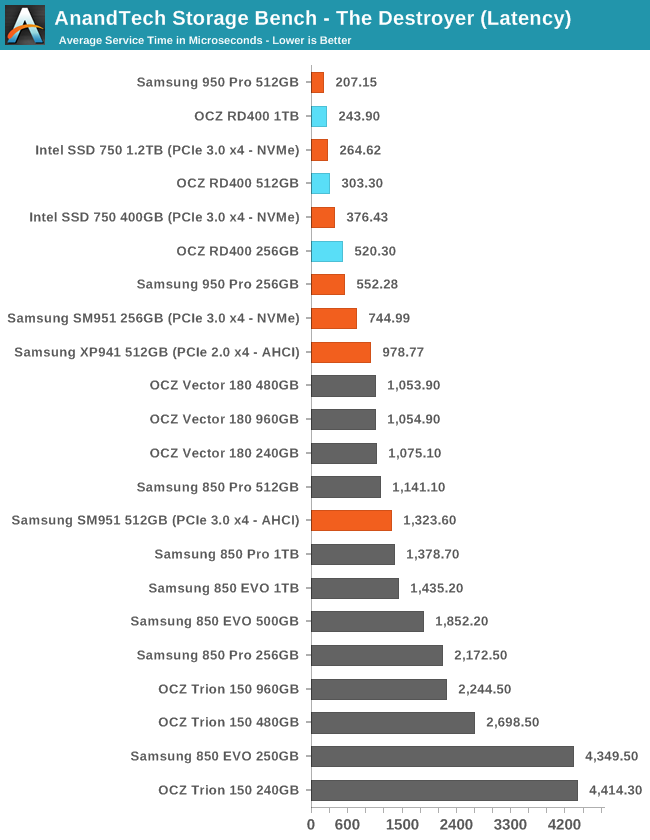
All three RD400 capacities deliver an average service time that falls between the scores of the two 950 Pro capacities. Even the 256GB RD400 almost halves the latency of the best SATA drives.
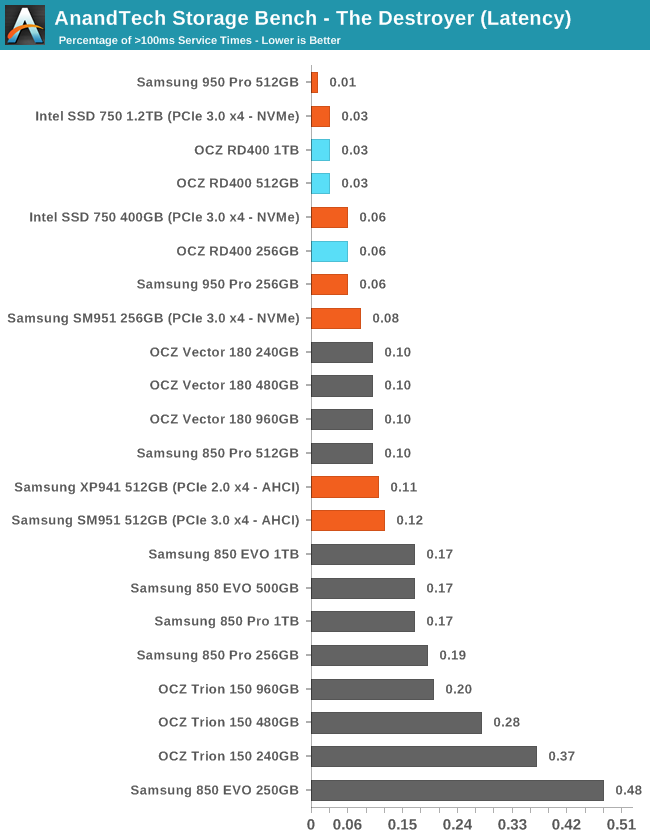
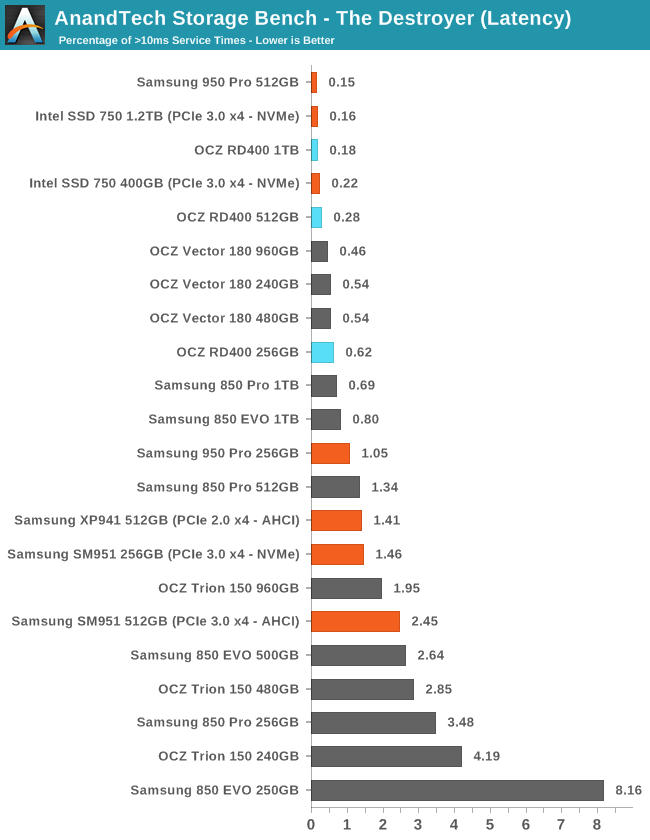
The NVMe drives top the charts for having an extremely low number of severe latency outliers in excess of 100ms, but the 512GB 950 Pro is still clearly the best performer. The NVMe drives are not all clear winners when looking at the number of latency outliers in excess of 10ms: the 256GB RD400 falls behind the Vector 180 and the 256GB 950 Pro is even further behind.
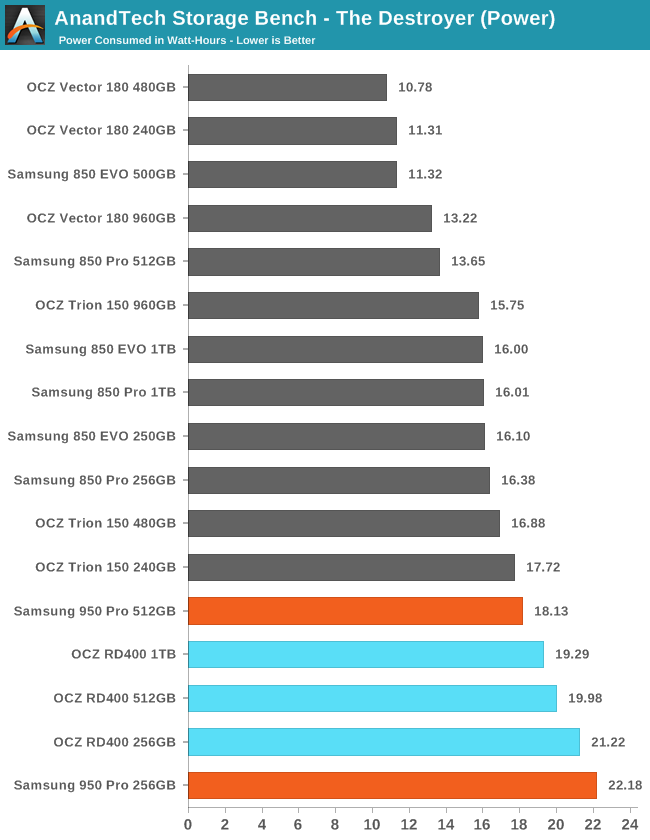
High performance usually carries some cost of high power consumption. The PCIe drives complete The Destroyer far quicker than any of the SATA drives but use more energy overall, and the RD400 falls in between the two capacities of the Samsung 950 Pro.










40 Comments
View All Comments
tarqsharq - Wednesday, May 25, 2016 - link
Interesting article as always. I had been hoping for a larger price gap between this and the Samsung 950 Pro. At current prices, I think the choice is fairly obvious unless you need a 1TB SSD.Chaitanya - Wednesday, May 25, 2016 - link
You have a choice of Sandisk X400 as well if you want 1TB capacity in M.2 form factor.edzieba - Wednesday, May 25, 2016 - link
There's also the OEM version of the OCZ drive, the Toshiba XG3, which is also available in a 1TB m.2 SKU.Lord of the Bored - Thursday, May 26, 2016 - link
And who DOESN'T need a 1TB SSD?MrSpadge - Friday, May 27, 2016 - link
I think you're mixing up "want" and "need".DanNeely - Wednesday, May 25, 2016 - link
"Unlike most cheap adapter cards, the RD400's adapter draws power from the PCIe slot's 12V supply and converts it to the 3.3V required by the M.2 drive."PCIe slots provide 10W of 3.3V power directly. (I believe this was originally done to make converting legacy cards via a bridge chip easier.) Why would the card need to do any DC-DC conversion?
Byrn - Wednesday, May 25, 2016 - link
I'd assume that if they convert they can get cleaner 3.3V than if they use the feed through the PCIe slot, or that they can design in better resilience to sudden power demand changes...Basically, by converting I would have thought they can better fit the power supplied to the drive to the demands it makes.
digitalgriffin - Wednesday, May 25, 2016 - link
You can filter any volt feed with enough capacitors. But you lose power efficiency when you do.Alexvrb - Wednesday, May 25, 2016 - link
Yeah but they're filtering the power either way so converting from 12V -> 3.3V is less efficient than using 3.3V to start with. But getting back to what Byrn was saying... Byrn, they don't have a choice: This drive draws too much power to use the 3.3V supply.Look at idle power figures in this article. ~2.5W @ 12V. At 3.3V that would already be pushing it (right around 9W already). Under a load it's going to draw too much. So they had to use the 12V rail.
Wardrop - Wednesday, May 25, 2016 - link
2.5 watts is 2.5 watts. If it's a higher voltage, it's less amps, and vice versa. I think you've confused watts with amps?